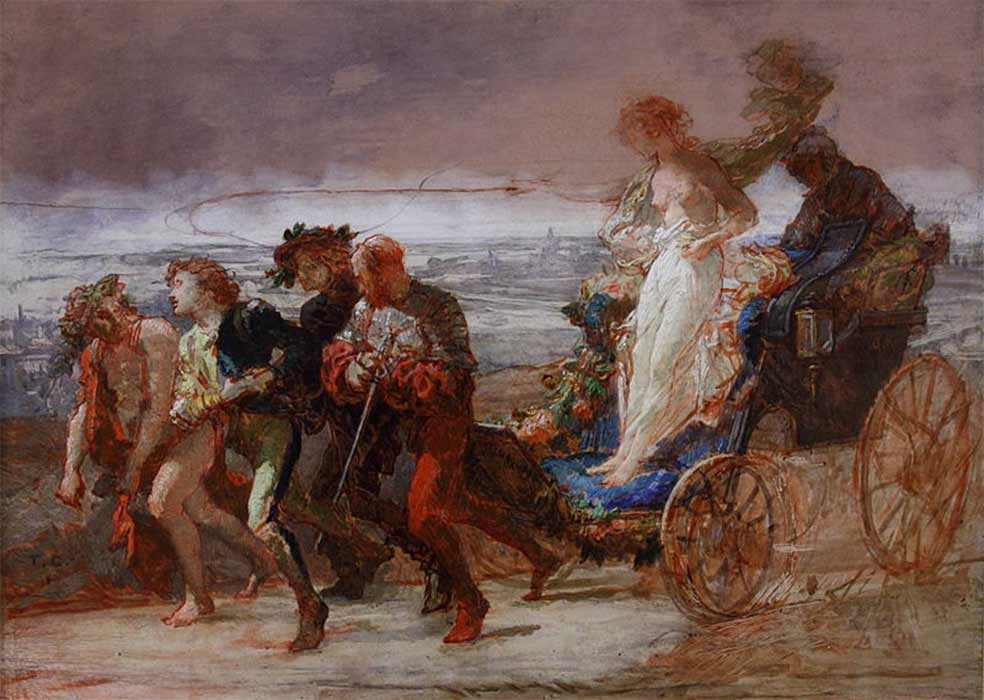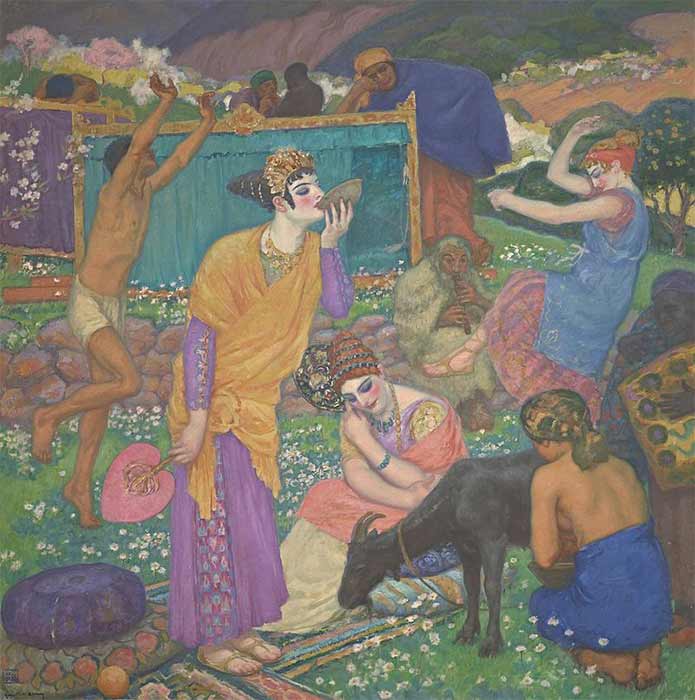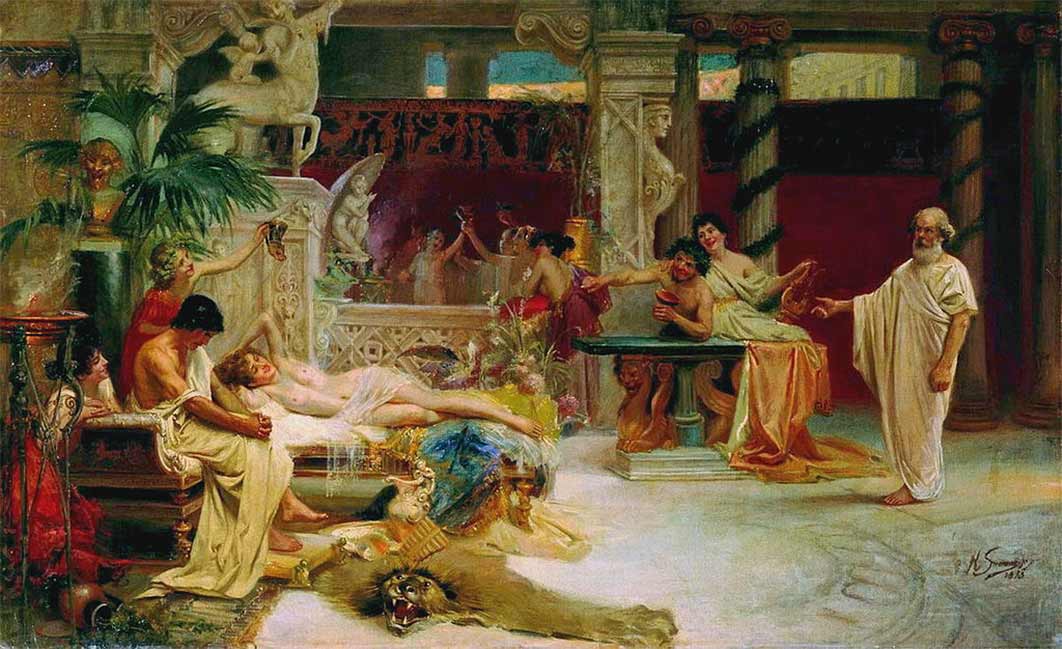
Women Of Independent Means, Revered Ancient Courtesans
One day, the 19th-century courtesan, Esther Guimond, was traveling through Naples when she was stopped for a routine examination of her passport. When asked her profession, she quietly and discreetly told the official that she was a woman of independent means. Seeing the puzzled look on the official’s face, she exasperatedly declared, “Courtesan! Take care to remember it!”. Then, perhaps feeling somewhat liberated by this word coming out of her own mouth, she told him audaciously to “go and tell that Englishman over there.” On her death certificate of 1845, Harriette Wilson, the famous British Regency courtesan and mistress of significant and very public men such as Major-General William Craven, First Earl of Craven, and statesman Arthur Wellesley, First Duke of Wellington, is discreetly described as a “woman of independent means.”

Courtesans in the Countryside by Rupert Bunny (1920) (Public Domain)
Life As A Courtesan
A courtesan is a paramour of society's wealthy and elite men. She entices her client not only with her beauty and seductive qualities, but also with her education, talents and charm. For a high fee, a courtesan would entertain as well as provide companionship to the man she is with such as accompanying him to a social event instead of his wife. These women came from a variety of backgrounds. Some grew up impoverished and moved to a town where they learned to “sell” themselves, not just for sex, but as a woman with much more to offer. Others were actresses who continued to perform both on and off the stage. She may have begun her career as an assistant or companion to another courtesan to learn the trade, or she may have begun as a mistress to a wealthy man.
As women began to realize the degree of freedom and independence they enjoyed by becoming a courtesan, widows, divorcees, and even upper-class women sought out the courtesan lifestyle. A very successful courtesan could be very wealthy and even host parties in her own home. The life of a courtesan was considered opulent. However, even when the courtesan was no longer considered young, beautiful, and desirable, some women retained a large number of clients through their intelligence, wit, knowledge and engaging personalities. Others who did not fare as well faded into obscurity, perhaps marrying or retiring into an ordinary existence.
As courtesans operated in hierarchical societies that emphasized court cultures, they are well-worth studying not only for their arts, but also for their roles as indicators of political and social change.
- Phryne, The Ancient Greek Prostitute Who Flashed Her Way to Freedom
- The Four Great Beauties, and the Arts of the Courtesans in Ancient China
- Exposing the Secret Sex Lives of Famous Greeks and Romans in the Ancient World
They were frequently among the most important stewards of artistic traditions and creativity. Courtesans were an important part of the social fabric in ancient Greece and Rome, as well as most places in the Far East and South Asia. Some ancient courtesans were among the best-educated, literate, and cultured women of their time. They composed and performed music, as well as painted and danced. They provided intelligent conversation and artistic pleasure to elite men. The cultivated courtesan was a very refined, educated woman. She was a respected woman of status and wealth.
She was, of course, also erotically desirable as sex was an important part of the life of a courtesan. A ‘public woman’, according to the Kama Sutra, should be skilled in 64 arts, including singing, musical instruments, dancing, writing, drawing, magic, tailoring, carpentry, architecture and chemistry. She could hold a conversation with men on an equal footing. She was also always respected by the king and sought after by learned men, and because her favour was sought after by all, she became a universally admired figure.

Hetairai by Henryk Siemiradzki (1783) (Public Domain)





